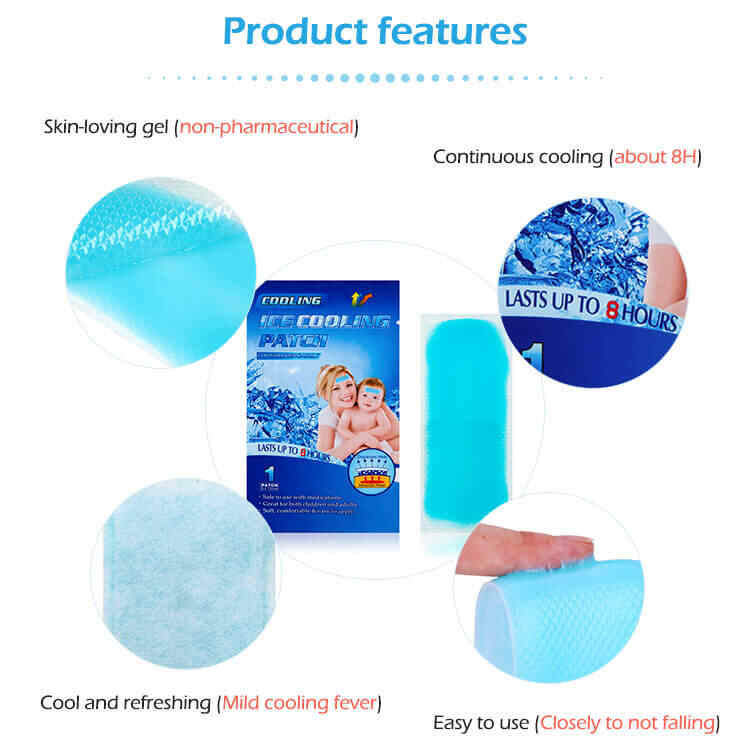Are Eco-Friendly Menthol Cooling Patches More Expensive?
The global health and wellness market is experiencing a powerful shift toward sustainability. Consumers are increasingly eco-conscious, and brands across industries are responding by offering greener, safer, and more environmentally responsible products. Menthol cooling patches—widely used for relieving headaches, fevers, and muscle discomfort—are no exception. This raises an important question for businesses and buyers: Are eco-friendly menthol cooling patches more expensive?
The short answer is that eco-friendly patches often come with a slightly higher production cost due to biodegradable materials and sustainable processes. However, when brands work with a reliable menthol cooling patches Manufacturer or menthol cooling patches Supplier, the benefits far outweigh the price difference. Eco-friendly Custom menthol cooling patches and Private Label menthol cooling patches can enhance brand reputation, attract eco-conscious consumers, and future-proof businesses against tightening environmental regulations.
In this article, we will explore cost factors, long-term benefits, the role of menthol cooling patches OEM solutions, and why investing in eco-friendly patches is a smart business decision.

Why Eco-Friendly Menthol Cooling Patches Are in Demand
The demand for eco-friendly cooling patches is rising for several reasons:
Consumer Awareness – Shoppers are more educated about plastic waste and pollution.
Regulatory Pressure – Governments worldwide are banning or taxing single-use plastics.
Brand Differentiation – Green products stand out in crowded wellness markets.
Corporate Responsibility – Sustainability is now a core part of many companies’ values.
For a menthol cooling patches Manufacturer, adopting eco-friendly solutions is no longer optional—it’s a strategic move to remain competitive.
What Makes Eco-Friendly Menthol Cooling Patches Different?
Traditional cooling patches typically use:
Petroleum-based hydrogels
Synthetic adhesives
Plastic backings
Foil or plastic-heavy packaging
Eco-friendly alternatives replace these with biodegradable or recyclable options:
Biodegradable hydrogels made from cellulose, chitosan, or starch.
Plant-based adhesives that are gentle on the skin and eco-friendly.
PLA or bio-fabric backings instead of plastic films.
Compostable packaging using paper-based laminates.
Each eco-friendly substitution adds value but may slightly increase costs due to advanced raw materials and production technologies.
Are Eco-Friendly Menthol Cooling Patches More Expensive to Produce?
Yes, initially. The reasons include:
Raw Material Costs
Biodegradable polymers and plant-based adhesives often cost more than conventional plastic-based materials.
However, as demand grows, costs are expected to drop due to economies of scale.
Manufacturing Adjustments
A menthol cooling patches OEM partner may need to upgrade machinery or adopt new processes for biodegradable hydrogels or eco-friendly films.
These investments add to early production costs.
Research and Development
Developing new formulations for Custom menthol cooling patches that balance performance and sustainability requires R&D investment.
Packaging Innovations
Eco-friendly packaging is often more expensive than conventional foil or plastic pouches.
How Much More Expensive Are They Compared to Traditional Patches?
While the exact cost difference varies by supplier and region, eco-friendly patches may cost 10–25% more than conventional ones during early adoption. However, this gap continues to narrow as raw material technology advances and more menthol cooling patches Suppliers embrace sustainable production.
Why the Extra Cost Is Worth It
Market Differentiation
Eco-friendly Private Label menthol cooling patches allow brands to stand out in competitive markets.
Consumer Loyalty
Studies show eco-conscious buyers are willing to pay a premium for sustainable products.
Regulatory Compliance
Early adoption reduces the risk of fines, bans, or mandatory reformulation in the future.
Brand Reputation
Partnering with a menthol cooling patches Manufacturer that prioritizes sustainability strengthens corporate image.
Long-Term Cost Savings
Once eco-friendly materials scale up, prices are expected to match or even beat conventional alternatives.
Role of Menthol Cooling Patches OEM in Managing Costs
A menthol cooling patches OEM partner can significantly reduce the financial impact of transitioning to eco-friendly solutions:
Bulk Raw Material Sourcing – OEM manufacturers often have supplier networks that lower costs.
Custom Formulations – Brands can develop Custom menthol cooling patches tailored to budget and sustainability goals.
Flexible Production – OEM partners can gradually introduce biodegradable components instead of full-scale shifts.
Private Label Services – Eco-friendly Private Label menthol cooling patches allow small and mid-sized brands to compete without heavy R&D investment.
How Can Brands Offset Higher Costs?
Premium Branding – Market eco-friendly patches as premium products with unique value.
Target Niche Markets – Focus on health-conscious and environmentally aware customers.
Scale Production – Larger orders reduce per-unit cost with OEM partners.
Strategic Marketing – Highlight sustainability in product packaging and digital campaigns.
Incremental Transition – Start by adopting eco-friendly packaging before moving to full biodegradable patch formulations.
Case for Private Label Eco-Friendly Menthol Cooling Patches
For businesses entering the wellness market, Private Label menthol cooling patches are an attractive option. By working with a menthol cooling patches Supplier offering sustainable private label solutions, brands can:
Launch eco-friendly products faster.
Avoid large upfront R&D costs.
Benefit from pre-tested biodegradable formulations.
Customize branding to appeal to eco-conscious consumers.
The Future of Eco-Friendly Menthol Cooling Patches
Over the next decade, sustainable cooling patches will likely shift from being a premium product to an industry standard. Manufacturers are already investing heavily in biodegradable hydrogels, natural adhesives, and compostable packaging.
As costs decrease, brands that embraced eco-friendly production early will gain market dominance, while those relying on outdated methods may struggle to keep up.
Conclusion
So, are eco-friendly menthol cooling patches more expensive? Yes, at the moment, they usually cost more than traditional patches due to higher material costs, R&D, and packaging innovations. However, the extra investment brings stronger brand positioning, consumer trust, and long-term savings as production scales.
For companies, partnering with a forward-thinking menthol cooling patches Manufacturer, menthol cooling patches OEM, or menthol cooling patches Supplier is the most effective way to balance cost and sustainability. Whether through Custom menthol cooling patches or Private Label menthol cooling patches, eco-friendly solutions are a smart and future-proof business choice.
Related Questions and Answers
Q1: Why do eco-friendly menthol cooling patches cost more?
A1: They use biodegradable materials and sustainable packaging, which are currently more expensive than traditional options.
Q2: Will the cost difference decrease in the future?
A2: Yes, as demand grows and production scales, eco-friendly patches will become more affordable.
Q3: Can a menthol cooling patches OEM reduce costs for eco-friendly products?
A3: Absolutely. OEM partners help with bulk sourcing, optimized formulations, and scalable production to manage costs.
Q4: Are consumers willing to pay more for eco-friendly patches?
A4: Yes, eco-conscious buyers value sustainability and often pay a premium for greener products.
Q5: Should small brands invest in eco-friendly Private Label menthol cooling patches?
A5: Yes, private label options let smaller businesses enter the eco-friendly market without heavy R&D expenses.






